Tech
Private Compute Services on Android – Detailed Guide
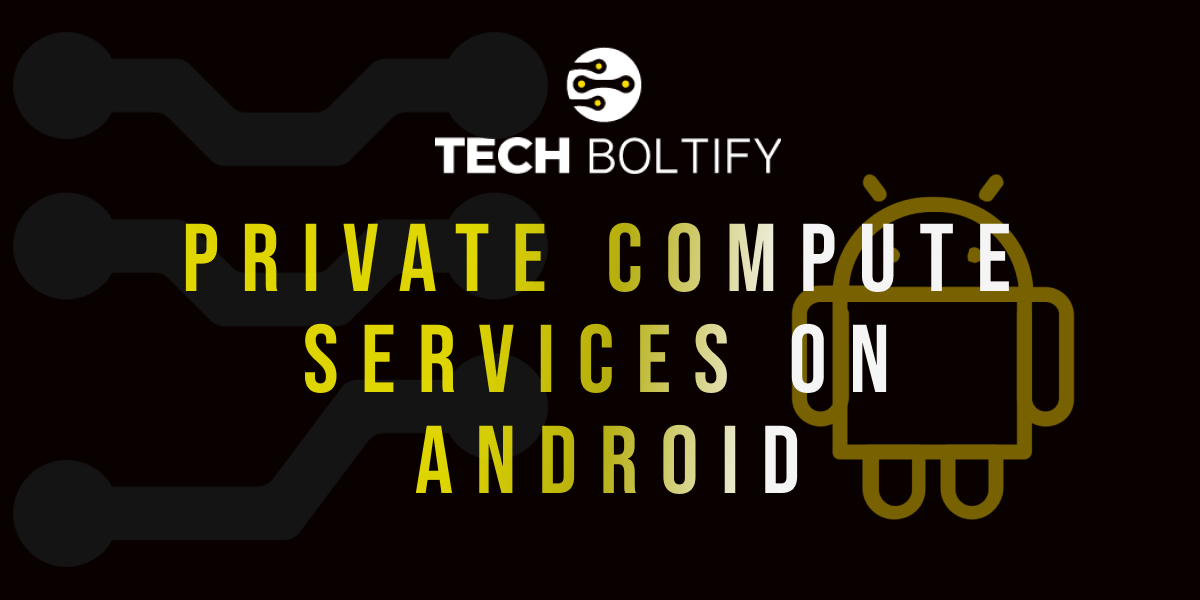
If you’ve recently upgraded to Android 12 or higher, you may have noticed a feature called Private Compute Services (PCS). This service plays a crucial role in ensuring your data privacy and security, offering advanced capabilities through machine learning and AI-driven technology. In this guide, we will explore what Private Compute Services are, how they work, and why they are an essential part of your Android device’s privacy system.
What is Private Compute Core (PCC)?
Private Compute Core (PCC) is a security feature introduced in Android 12, designed to protect sensitive data on your device. The core idea behind PCC is to isolate data processing and machine learning tasks on the device itself, preventing sensitive data from being sent to external servers or cloud services unless explicitly authorized by the user. This mechanism enhances user privacy by keeping data computations local and secure.
PCC works in tandem with Private Compute Services (PCS), which is a system-level service responsible for managing machine learning tasks and other privacy-preserving processes on the Android platform. These services work to protect your data during operations such as language translation, live captions, smart replies, and more.
Key Features of Private Compute Services on Android
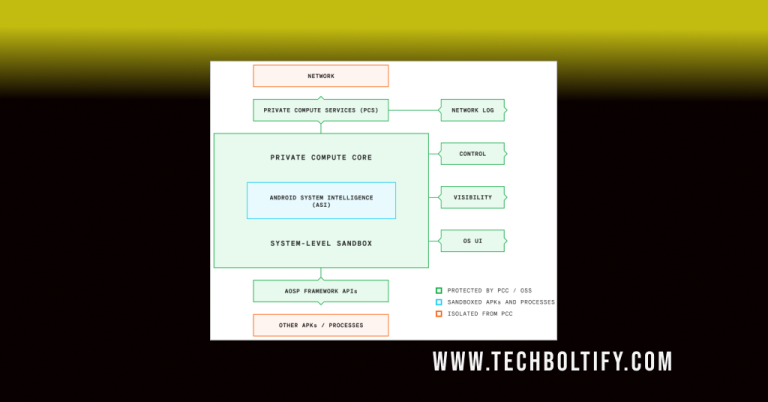
Private Compute Services offer various advanced features designed to enhance privacy and security on your Android device. Some of the key features include:
Data Privacy Preservation
PCS helps ensure that sensitive information is processed without being transmitted over the internet. For instance, data used for machine learning tasks (like voice recognition or language translation) is not sent to the cloud unless necessary, minimizing exposure to third-party servers.
Real-Time Language Translation
PCS leverages machine learning for real-time translation while keeping the data processing secure on the device. This allows users to enjoy seamless language translation features without worrying about data leakage.
Smart Replies
PCS enables intelligent, context-aware replies while typing, improving productivity. The responses are processed securely on the device, ensuring that your data remains private.
Federated Learning & Analytics
Using cutting-edge technologies like Federated Learning and Federated Analytics, PCS allows for machine learning models to be trained on local data without sharing that data with the cloud, improving both privacy and user experience.
Private Information Retrieval
This feature ensures that sensitive data, such as personal contacts or calendar events, is not exposed to external sources unless explicitly requested by the user, ensuring confidentiality.
What are Private Compute Services Used For
Private Compute Services acts as a mediator between the Private Compute Core (PCC) and the cloud. It serves multiple purposes in safeguarding data and enhancing user experience. Here’s how it works:
Machine Learning on Device
PCS leverages machine learning to handle tasks like voice recognition, image processing, and predictive text on the device. This ensures that the data remains within the device and is not uploaded to external servers for processing.
Privacy-Centric Features
With the growing concerns around data privacy, PCS ensures that apps do not have direct access to sensitive information such as your photos, location, or voice data unless explicitly permitted. It facilitates secure processing of sensitive data, ensuring that it is used only for the intended purpose.
Isolated Environment
The system creates isolated environments within Android to keep each app’s data secure. For example, if you use a camera app, your photos won’t be streamed to the internet unless you authorize such an action. This isolation prevents unauthorized data access by third-party apps.
Availability of Private Compute Services App
The Private Compute Services app is pre-installed on Android 12 and newer versions. However, it is not directly visible on your home screen or app drawer, as it functions behind the scenes as part of the system. You won’t find it listed among your regular apps in the app manager.
Since Private Compute Services is an integral part of the Android operating system, it is automatically activated and integrated into your device. Therefore, you will not see an icon or a notification for this service, as its role is to operate discreetly in the background, ensuring your data remains protected while improving your Android experience.
PCS is also not available on older Android devices, as it is a feature designed specifically for newer Android versions (starting with Android 12).
Should I Uninstall Private Compute Services?

While it may seem tempting to uninstall system-level apps like PCS, it is generally not advisable to remove Private Compute Services from your device. Here’s why:
- Enhanced Privacy: PCS is designed to keep your data secure by preventing unauthorized access. Removing it could leave your device vulnerable to data breaches.
- System Integration: Since Private Compute Services is integrated into Android 12 and newer versions, it ensures smooth operation across your device. Many system-level functions, like machine learning models and real-time language translation, depend on PCS to function properly.
- Optimized Performance: The system processes tasks more efficiently and securely when Private Compute Services is enabled. This optimizes your device’s overall performance, especially when dealing with AI-driven tasks.
- App Compatibility: Some apps that rely on secure data processing or machine learning may malfunction or lose critical functionality if Private Compute Services is uninstalled.
Features of Private Compute Services on Android
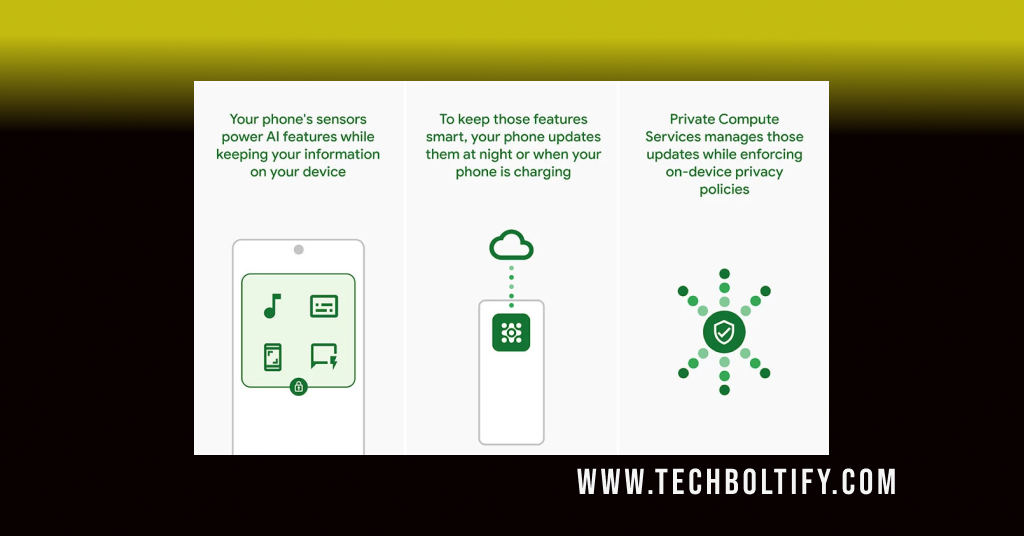
In addition to safeguarding data and privacy, Private Compute Services also provides several key features that enhance your Android experience. Some of the most notable features include:
- AI and Machine Learning: PCS uses AI models that run directly on your device, providing features like smart replies, text prediction, and real-time captioning without uploading your data to the cloud.
- Federated Learning: This is an advanced technique where models are trained using local data on your device without sharing that data. The learning process takes place across multiple devices, ensuring privacy and enhancing machine learning algorithms.
- Private Information Retrieval: PCS ensures that your private data, such as personal photos and contacts, is not shared with third parties unless explicitly authorized, reducing the risk of data leaks.
- Real-Time Data Processing: Whether you’re using Google Assistant, voice recognition, or other intelligent features, PCS ensures that all data processing happens on the device in a secure manner, reducing the chances of data being exposed to external servers.
- Integration with Android System: PCS is closely integrated with other Android features, including the camera, microphone, and other sensors. It ensures that apps only have access to these features when required, minimizing exposure to potential privacy risks.
Conclusion
Private Compute Services is a vital feature that enhances privacy, security, and the overall user experience on Android devices. With the advent of more sophisticated machine learning models and the increasing demand for data privacy, PCS serves as a powerful tool to ensure that sensitive information remains secure on your device.
By leveraging technologies like Federated Learning and Private Information Retrieval, PCS minimizes the risk of data exposure while still enabling powerful AI features like real-time language translation, smart replies, and image recognition.
Given its role in enhancing both privacy and device performance, it’s recommended that you keep Private Compute Services installed on your Android device. It is a system-level service designed to work seamlessly in the background, and removing it could negatively affect your device’s functionality.
FAQs
Is the PCS app installed in every mobile?
No, the PCS app is available only on Android 12 or newer devices. It is pre-installed as part of the system software and operates without an icon in the app drawer.
Do Google PCS Android link to other apps?
No, PCS operates independently from other apps. It ensures that each app’s data remains isolated and secure by processing information on the device itself.
Is PCS a hidden app?
Yes, Private Compute Services runs quietly in the background without displaying an icon or notification on your device. It operates discretely to protect your privacy while enhancing functionality.
Can I uninstall Private Compute Services?
It’s generally not recommended to uninstall PCS, as it is integral to your device’s privacy and security. Uninstalling it could interfere with system processes and app compatibility.
How does PCS enhance privacy?
PCS ensures that sensitive data like voice recordings, photos, and contacts are not shared with external servers unless explicitly authorized. It uses on-device machine learning models to process data securely.
Tech
How To Bridge Front-End Design And Backend Functionality With Smarter API Strategy
Introduction: Building More Than Just Screens
We’ve all seen apps that look sharp but crumble the moment users push beyond the basics. A flawless interface without strong connections underneath is like a bridge built for looks but not for weight. That’s why APIs sit at the heart of modern software. They don’t just move data; they set the rules for how design and logic cooperate. When APIs are clear, tested, and secure, the front-end feels smooth, and the backend stays reliable.
The reality is that designing those connections isn’t just “coding.” It’s product thinking. Developers have to consider user flows, performance, and future scale. It’s about more than endpoints; it’s about creating a system that’s flexible yet stable. That mindset also means knowing when to bring in a full-stack team that already has the tools, patterns, and experience to move fast without cutting corners.
Here’s where you should check Uruit’s website. By focusing on robust API strategy and integration, teams gain the edge to deliver features user’s trust. In this article, we’ll unpack how to think like a product engineer, why APIs are the real bridge between design and functionality, and when it makes sense to call in expert support for secure, scalable development.
How To Define An API Strategy That Supports Product Goals
You need an API plan tied to what the product must do. Start with user journeys and map data needs. Keep endpoints small and predictable. Use versioning from day one so changes don’t break clients. Document behavior clearly and keep examples short. Design for errors — clients will expect consistent messages and codes. Build simple contracts that both front-end and backend teams agree on. Run small integration tests that mimic real flows, not just happy paths. Automate tests and include them in CI. Keep latency in mind; slow APIs kill UX. Think about security early: auth, rate limits, and input checks. Monitor the API in production and set alerts for key failures. Iterate the API based on real use, not guesses. Keep backward compatibility where possible. Make the API easy to mock for front-end developers. Celebrate small wins when a new endpoint behaves as promised.
- Map user journeys to API endpoints.
- Use semantic versioning for breaking changes.
- Provide simple, copy-paste examples for developers.
- Automate integration tests in CI.
- Monitor response times and error rates.
What To Do When Front-End and Backend Teams Don’t Speak the Same Language
It happens. Designers think in pixels, engineers think in data. Your job is to make a shared language. Start by writing small API contracts in plain text. Run a short workshop to align on fields, types, and error handling. Give front-end teams mocked endpoints to work against while the backend is built. Use contract tests to ensure the real API matches the mock. Keep communication frequent and focused — short syncs beat long meetings. Share acceptance criteria for features in user-story form. Track integration issues in a single list so nothing gets lost. If you find repeated mismatches, freeze the contract and iterate carefully. Teach both teams basic testing so they can verify work quickly. Keep the feedback loop tight and friendly; blame only the problem, not people.
- Create plain-language API contracts.
- Provide mocked endpoints for front-end use.
- Contract tests between teams.
- Hold short, recurring integration syncs.
- Keep a single backlog for integration bugs.
Why You Should Think Like a Product Engineer, Not Just A Coder
Thinking like a product engineer changes priorities. You care about outcomes: conversion, help clicks, retention. That shifts API choices — you favor reliability and clear errors over fancy features. You design endpoints for real flows, not theoretical ones. You measure impact: did a change reduce load time or drop errors? You plan rollouts that let you test with a small cohort first. You treat security, observability, and recoverability as product features. You ask hard questions: what happens if this service fails? How will the UI show partial data? You choose trade-offs that help users, not just satisfy a design spec. That mindset also tells you when to hire outside help: when speed, scale, or compliance exceeds your team’s current reach. A partner can bring patterns, reusable components, and a proven process to get you shipping faster with less risk.
- Prioritize outcomes over features.
- Measure the user impact of API changes.
- Treat observability and recovery as product features.
- Plan gradual rollouts and feature flags.
- Know when to add external expertise.
How We Help and What to Do Next
We stand with teams that want fewer surprises and faster launches. We help define API strategy, write clear contracts, and build secure, testable endpoints that front-end teams can rely on. We also mentor teams to run their own contract tests and monitoring. If you want a quick start, map one critical user flow, and we’ll help you design the API contract for it. If you prefer to scale, we can join as an extended team and help ship several flows in parallel. We stick to plain language, measurable goals, and steady progress.
- Pick one key user flow to stabilize first.
- Create a minimal API contract and mock it.
- Add contract tests and CI guards.
- Monitor once live and iterate weekly.
- Consider partnering for larger-scale or compliance needs.
Ready To Move Forward?
We’re ready to work with you to make design and engineering speak the same language. Let’s focus on one flow, make it reliable, and then expand. You’ll get fewer regressions, faster sprints, and happier users. If you want to reduce risk and ship with confidence, reach out, and we’ll map the first steps together.
Tech
Which SEO Services Are Actually Worth Outsourcing? Let’s Talk Real-World Wins
Okay, raise your hand if you thought SEO just meant stuffing keywords into blog posts and calling it a day. (Don’t worry, we’ve all been there.) Running a business comes with enough hats already, and when it comes to digital stuff, there’s only so much you can do on your own before your brain starts melting. The world of SEO moves quick, gets technical fast, and—honestly—a lot of it’s best left to the pros. Not everything, but definitely more than people expect. So, let’s go through a few of those SEO services you might want to hand off if you’re looking to get found by the right folks, minus the headaches.
Technical SEO—More Than Just Fancy Talk
If you’ve ever seen a message saying your website’s “not secure” or it takes ages to load, yeah, that’s technical SEO waving a big red flag. This stuff lives under the hood: page speed, mobile-friendliness, fixing broken links, and getting those little schema markup things in place so search engines understand what the heck your pages are about.
You could spend hours (days) learning this on YouTube or DIY blogs, but hiring a specialist—someone who does this all day—saves you a load of stress and guesswork. Sites like Search Engine Journal dig into why outsourcing makes sense, and honestly, after one too many late-night plugin disasters, I’m convinced.
Content Writing and On-Page Optimization (Because Words Matter)
Let’s not dance around it: great content still rules. But search-friendly content is a different beast. It needs to hit the right length, work in keywords naturally, answer genuine questions, and actually keep visitors hooked. Outsourcing writing, especially to someone who actually cares about your brand’s tone, is worth it for most of us.
On-page SEO, which is tweaking all those little details like titles, descriptions, internal links, and image alt text, is a time-eater. It’s simple once you get the hang of it, but when you’re trying to grow, outsourcing makes the most sense.
Link Building—Trickier Than It Looks
Here’s where things get a bit spicy. Backlinks are essential, but earning good ones (not spammy or shady stuff) takes relationship-building, tons of outreach, and real patience. You can spend all month sending emails hoping someone will give your guide a shout-out, or you can just hire folks with connections and a process. Just watch out for anyone promising “hundreds of links for dirt cheap”—that’s usually a shortcut to trouble.
Local SEO—Getting Seen in Your Own Backyard
Ever tried showing up for “pizza near me” only to find yourself on page 7? Local SEO isn’t magic, but it takes a special touch: optimizing your Google Business Profile, gathering reviews, and making sure your info matches everywhere. It’s honestly a job in itself, and most small teams find it way easier to have a local SEO pro jump in a few hours a month.
Reporting and Analytics—Don’t Go Blind
Last, don’t skip out on real reporting. If nobody’s tracking what’s working—and what’s not—you’re just flying blind. Outsourced SEO pros come armed with tools and real insights, so you can see if your money’s going somewhere or just swirling down the drain.
Wrapping Up—Be Realistic, Outsource Smarter
You’re good at what you do, but SEO is more like ten jobs rolled into one. Outsource the parts that zap your time or make your brain itch, and keep what you enjoy. Focus on the wins (more leads, higher rankings, fewer headaches), and watch your business get the attention it deserves.
Tech
White-Label SEO: Building Scalable Digital Marketing Partnerships
Table of Contents
- What Is White-Label SEO?
- Why Digital Agencies Choose White-Label Solutions
- How White-Label SEO Works in Practice
- Benefits for Small and Mid-Sized Agencies
- Risk Management and Quality Assurance
- White-Label SEO and Client Retention
- What to Look for in a White-Label SEO Partner
- Future Trends in White-Label SEO
What Is White-Label SEO?
White-label SEO refers to a business arrangement where an agency partners with a third-party provider to deliver SEO services under the agency’s own brand. Unlike traditional outsourcing, where the client may be aware of third-party involvement, white-label models ensure the service provider remains invisible to the end client. The agency retains control over client communication and branding while benefiting from the expertise and tools of seasoned SEO professionals.
This structure allows agencies to offer complete SEO solutions without needing deep in-house expertise, staffing, or technology. For those looking to deliver robust results while maintaining their branding, leveraging an established provider such as SEO white label by Vazoola is a popular route. As demand for scalable and specialized SEO services grows, white-label partnerships have become a cornerstone for forward-thinking digital marketing agencies.
Why Digital Agencies Choose White-Label Solutions
Agencies of all sizes frequently encounter resource constraints, particularly as clients ask for increasingly sophisticated services. Building an advanced SEO department in-house can be cost-prohibitive, requiring hiring, training, and constant adaptation to search engine algorithm changes. White-label solutions are attractive because they enable agencies to offer first-rate SEO without prohibitive investments.
Additionally, as the digital landscape evolves, clients seek integrated digital marketing strategies instead of disconnected services. With white-label SEO, agencies can rapidly expand their offerings, supporting their growth strategies while capturing a larger market share. This flexibility allows consultancies and digital agencies to remain competitive as demands for comprehensive solutions intensify.

How White-Label SEO Works in Practice
A typical white-label SEO partnership starts with thorough onboarding and aligning goals and processes between the agency and the provider. The agency submits client data and campaign objectives, while the provider crafts a tailored SEO strategy and implementation plan. Once campaigns are underway, the agency oversees communication with its clients, while the provider handles the technical execution—keyword research, link building, technical audits, or content creation.
White-label SEO providers support streamlined communication through client dashboards, branded reports, and regular performance updates. Consistent reporting helps agencies build trust and credibility with their clients without revealing the third-party provider. Workflow automation and transparency are central to success, as illustrated in case studies where agencies have seamlessly scaled from a handful to dozens of clients due to repeatable, managed processes. For further insights, consider Moz’s SEO Guide, a comprehensive resource on industry-accepted best practices.
Benefits for Small and Mid-Sized Agencies
White-label SEO is often a game-changer for small and mid-sized agencies because it equalizes the playing field with larger competitors. These agencies can deliver enterprise-grade SEO services by tapping into top-tier talent and technology while maintaining personalized client relationships. This versatility helps attract and retain clients who might otherwise gravitate toward major digital marketing firms.
Another key advantage is the ability to focus internal teams on their strengths, whether that’s account management, creative work, or strategy. Rather than spreading resources thin, agencies can direct their energy where it adds the most value. By outsourcing technical SEO, they reduce overhead and avoid the risks of hiring, training, and turnover.
Risk Management and Quality Assurance
A significant challenge in white-label SEO is ensuring consistent communication, maintaining transparency, and delivering dependable results. Agencies should adopt robust QA frameworks to monitor campaign progress, verify deliverables, and address issues promptly. Scheduled performance reviews, auditing tools, and transparent project management processes are essential to quality assurance.
To mitigate risks, agencies should establish transparent reporting systems and agree on milestones and metrics upfront. Following the guidance of established leaders like Moz can help agencies set clear expectations and implement best practices in all aspects of SEO campaign delivery.
White-Label SEO and Client Retention
Strong white-label partnerships foster long-term client retention. Agencies can consistently deliver value through outcome-focused campaigns—whether improving rankings, increasing organic traffic, or driving conversions. The ability to tap into a partner’s expertise and resources means agencies are better equipped to meet evolving client expectations and deliver measurable results over time.
The seamless integration of white-label services also allows agencies to provide end-to-end digital marketing solutions, reducing the need for clients to seek alternative providers.
What to Look for in a White-Label SEO Partner
Choosing the right white-label SEO partner is crucial. Agencies should prioritize experience, reputation, transparent processes, and technical scalability. A strong partner openly shares methodologies, provides real-time support, and can accommodate a growing client base without sacrificing quality or compliance.
Be wary of partners who promise rapid results without clear strategies, offer generic services, or lack documented reporting and quality control processes. Key questions to ask include: What is your approach to link building? How do you handle reporting and communication? What QA measures are in place? Review insights from trusted white-label news sources to compare industry-leading providers and inform your vetting process.
Future Trends in White-Label SEO
Automation, AI integration, and advanced analytics define the future of white-label SEO. Emerging tech platforms help streamline keyword research, content optimization, and reporting, delivering greater efficiency for agencies and their clients. As client expectations rise, providers focus on more sophisticated dashboards, granular analytics, and proactive strategic support.
Similarly, the partnership model is evolving. Agencies and white-label providers are moving toward deeper collaborations, with joint innovation and tailored solutions playing an increasing role. Agencies prioritizing adaptability and choosing forward-thinking partners will be best positioned to thrive in the changing landscape.
-
Tech1 year ago
AI and Freight Management
-

 Tech2 years ago
Tech2 years agoLPPe Service Android App and its Functions – How to Remove it
-

 Tech1 year ago
Tech1 year agoWhat is a Permission Controller – Control Manager Notifications
-
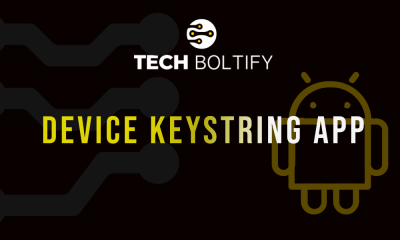
 Tech2 years ago
Tech2 years agoWhat is Device Keystring App On Android
-

 Tech2 years ago
Tech2 years agoWhat is Carrier Hub – How to Resolve Processing Requests Issues
-

 Tech2 years ago
Tech2 years agoWhat is Summit IMS Service – How to Stop Syncing on Your Android Device
-
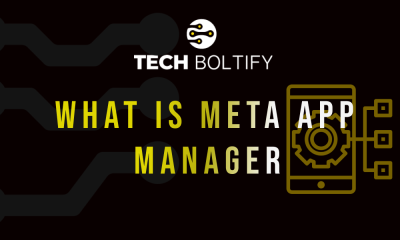
 Tech2 years ago
Tech2 years agoMeta App Manager – What is Meta App Installer
-

 Tech2 years ago
Tech2 years agoWhat is Cameralyzer Samsung – How to Fix or Uninstall Cameralyzer on Android









